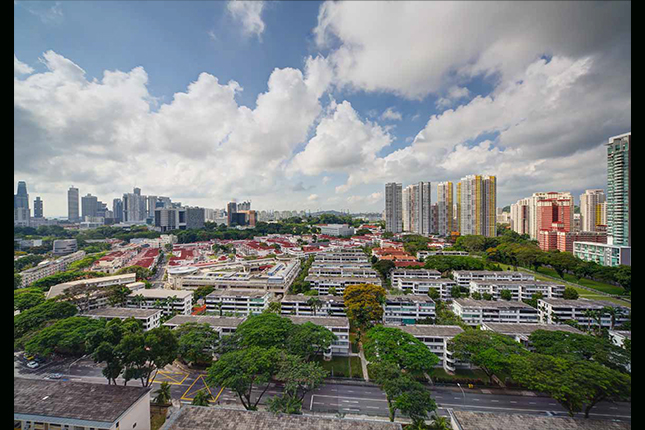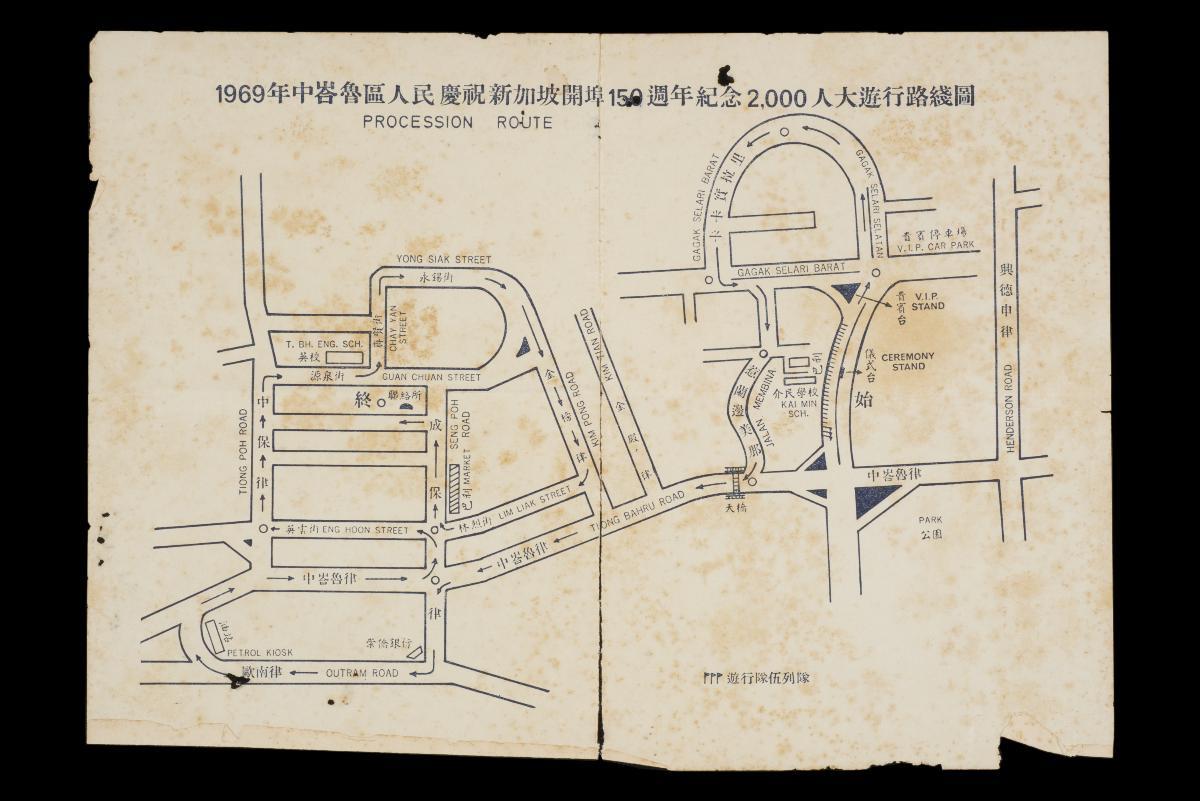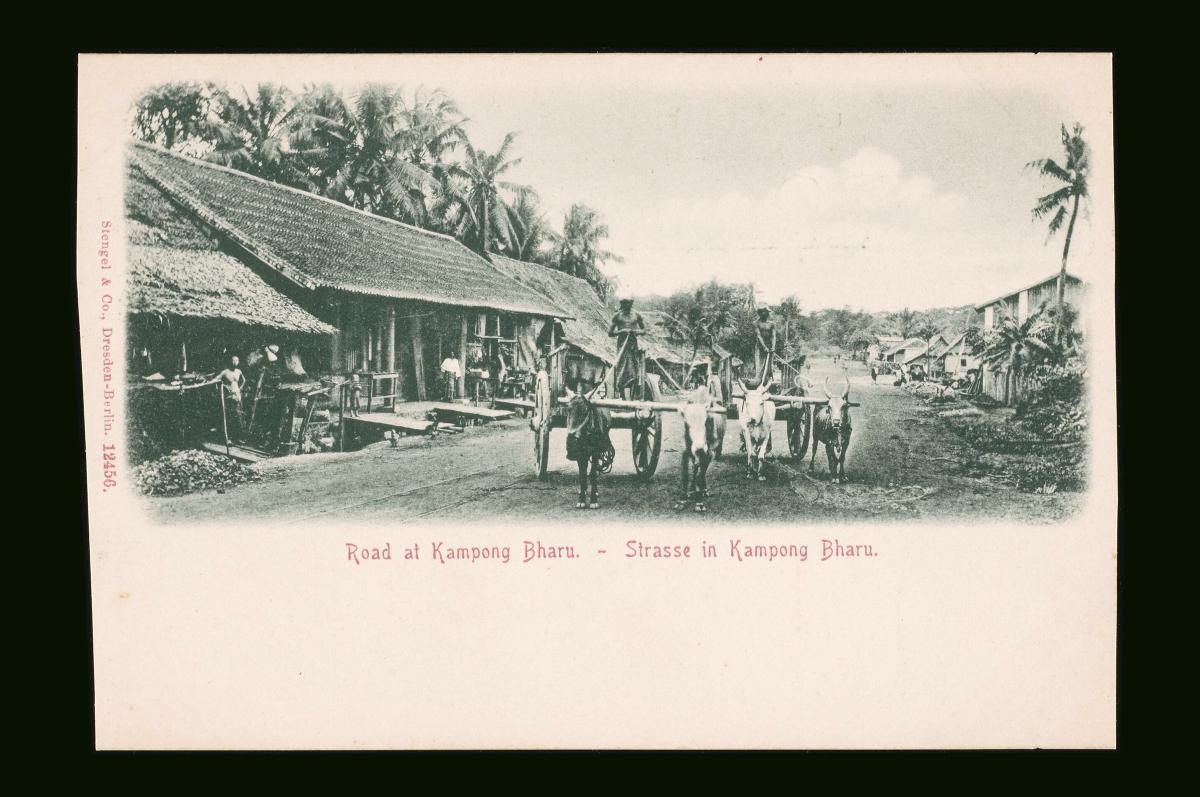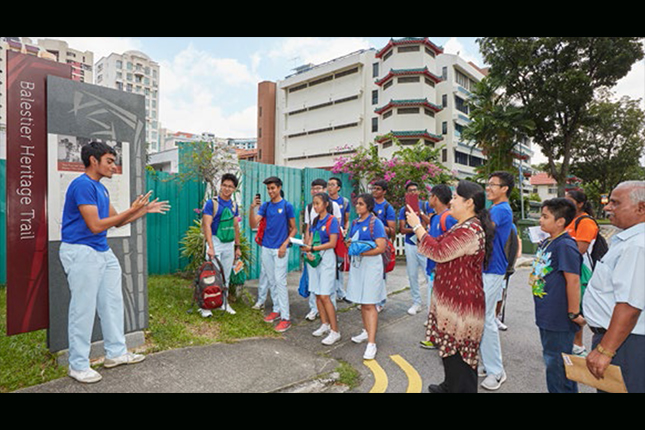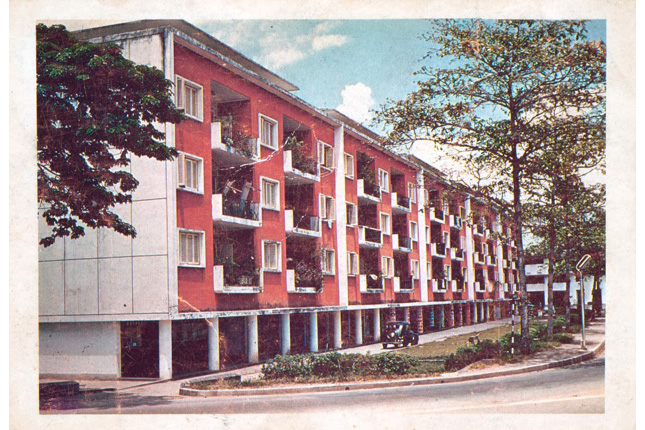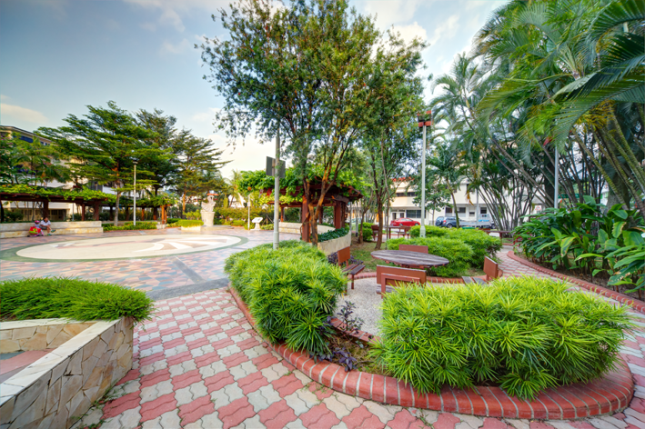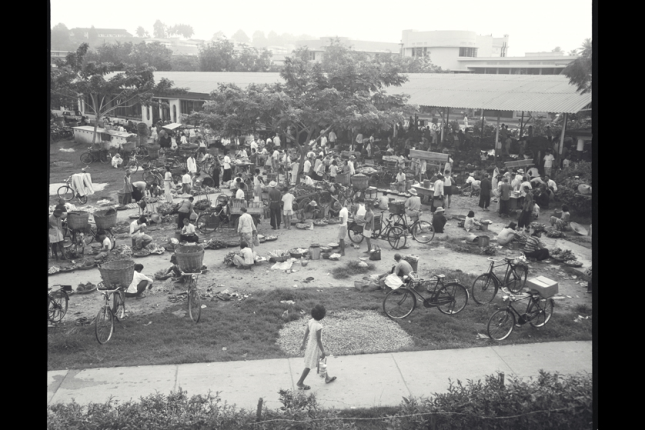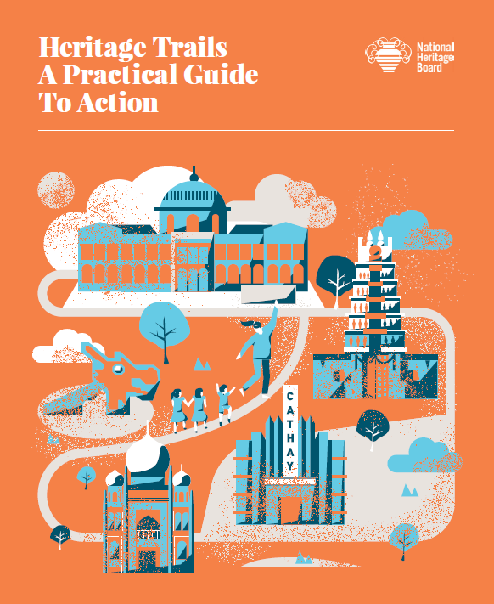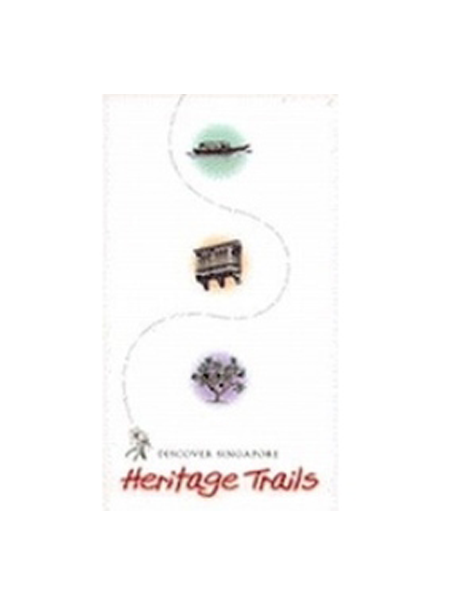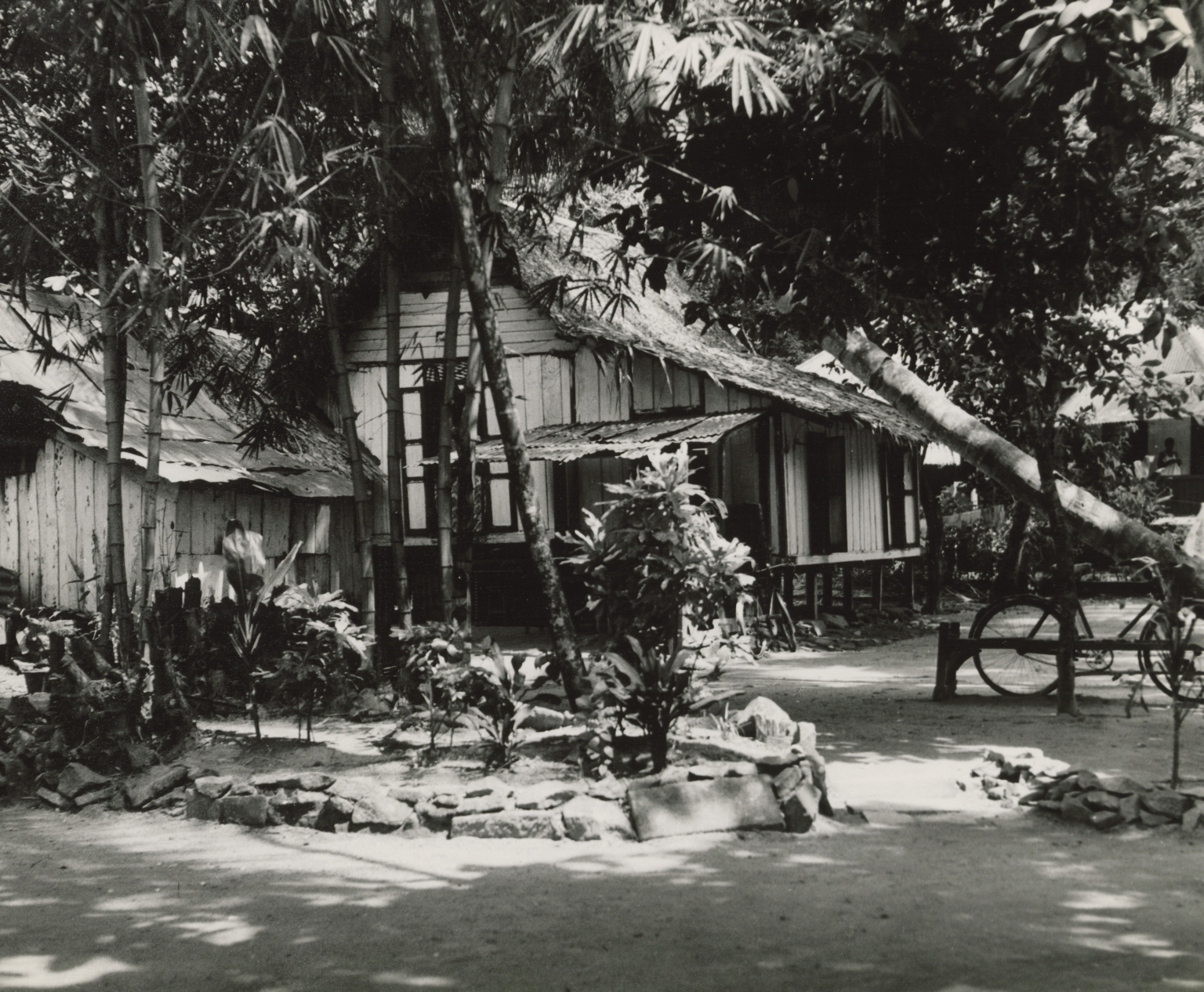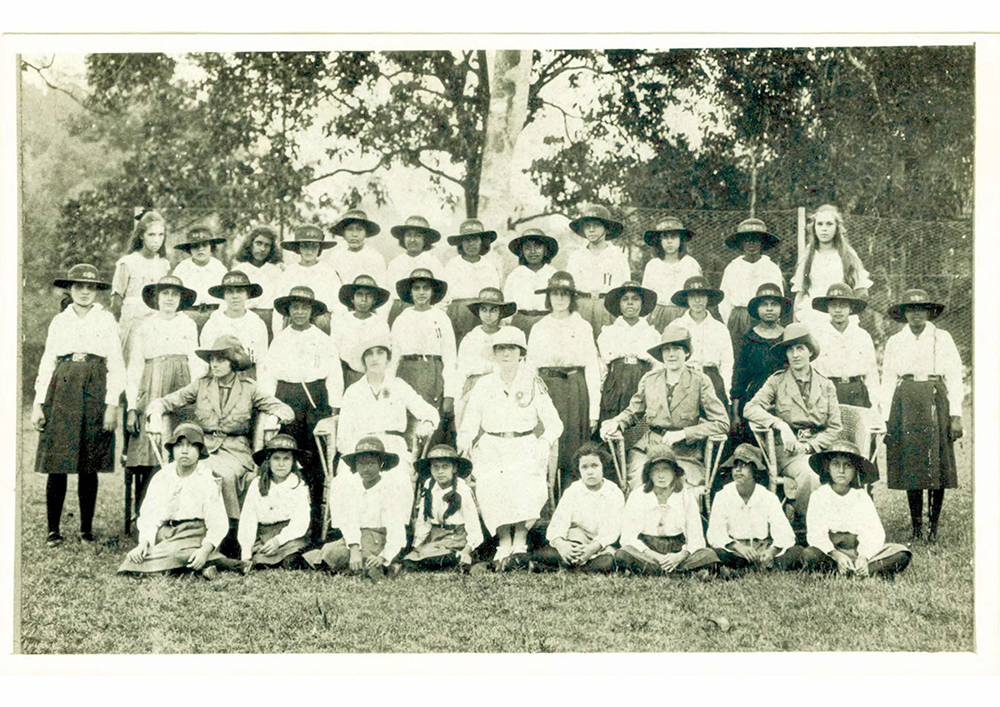Text by Tan May Ling and Josephine Sin
Images by Alex Heng and Marcus Ng
Be Muse Volume 6 Issue 2 - Jul to Sep 2013
Tucked way behind the borders of Singapore's shopping district is Tiong Bahru, a quaint and charming housing estate dotted with eclectic independent shops as well as eateries old and new. Popularly known for its food offerings and distinctive architecture, Tiong Bahru as become one of Singapore's most sought-after residences as many people have rediscovered in recent years the unique attractions of a laid-back, low-rise neighbourhood.
On 14 April 2013, the National Heritage Board (NHB) launched its 11th heritage trail to uncover the rich history and fascinating stories behind Tiong Bahru, which the public can now explore through a walking trail spanning the conserved housing area and its nearby surroundings. Tracing Tiong Bahru from its beginnings as an adjoining cemetery to a gravesite known as Teong Lama - literally 'Old Cemetery' - the trail sheds light on the social history and remarkable evolution of the estate, its unique Art Deco flats and shophouses, other landmarks past and present, as well as the people, trades, eateries and events that have helped shaped the community in Tiong Bahru.
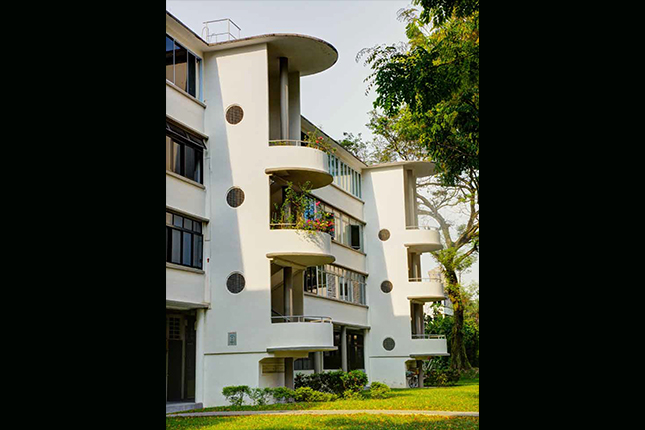
FROM BURIAL GROUND TO BUSTLING DESTINATION
There is definitely more to Tiong Bahru than meets the eye. As the third public housing project developed by the Singapore Improvement Trust or SIT, Kampong Tiong Bahru, as it was known then, was transformed from a Chinese burial ground to a thriving residential estate. Today, there are no traces of he swamps, hills and graves that once dotted the area around Tiong Bahru Road from the mid-19th century until the 1930s, but many other aspects of the past can still be seen in and around the estate and are highlighted by informative storyboards and markers placed by these historic sites.
One hidden nugget that even regular visitors and residents may not have known about is an air-raid shelter located right under the flats of Block 78 Moh Guan Terrace. This vacant space, which was for a time used as a rubbish disposal site, was in fact the large public air-raid shelter in Singapore and the only on to be built as part of a public housing project. The shelter, dug in 1939, could accommodate up to 1,600 people but was seldom used as Tiong Bahru was not a major target for Japanese bombs during the Second World War.
Another oft overlooked historical site lies at the outskirts of Tiong Bahru along Outram Road, across the road from a petrol kiosk and Tan Boon Liat Building. Here, on a wooded hill long abandoned and ignored by passers-by, rest the remains of philanthropist Tan Tock Seng (1798-1850), his daughter-in-law Chua Seah Neo (d. 1882) and granddaughter-in-law Wuing Neo (d. 1882). The same hillock was also the location of a thriving Chinese-medium school called Gongshang, which operated at the site from 1930 till 1988.
Other former landmarks have vanished or changed beyond recognition. Visitors will learn from the trail about the history of a site at the junction of Seng Poh and Tiong Bahru Roads, where a small temple stood between 1918 and 2006. This Chinese temple was a major feature of the neighbourhood due to a large red hulu or gourd-shaped incense burner placed outside the shrine. Right across the road from the temple was a very popular bird corner that used to draw people from all over the island to listen to the songs of feathered pets as well as enjoy meals at a coffeeshop beside the bird corner.
The site of the former Seng Poh Road Market is also a very different sight from the past; the cramped old market has given way to a spacious food centre and wet market, where many stallholders from the older market continue to prepare and serve popular hawker fare such as fried kway teow, Hokkien prawn noodles, wanton mee, chwee kueh, porridge and traditional snacks. Visitors can read about the individual stallholders, their history and culinary specialties in a brochure that presents the Tiong Bahru Heritage Trail in detail, which can be accessed here.
These are just a few of the many highlights of the trail, which is designed to tell the story of Tiong Bahru and chart the milestones of its development in a way that reflects the spirit and character of the community, including the personal memories of present and past residents. To this day, the physical and social landscape Tiong Bahru is still evolving, as new residents, businesses and visitors arrive and interact with each other as well as older establishments. The conservation status granted to the housing estate, however, paves the way for a harmonious blend of the classic and contemporary, as new eateries and retailers move into the pre-war shophouses, injecting new life into the estate while retaining its old-world, understated nature.
GUIDED BY VOLUNTEERS AND STUDENTS
The Tiong Bahru Heritage Trail also marked a number of ‘firsts’ for the NHB, which is working to engage Singaporeans in documenting and sharing about the history of the places where people live, work and play. The trail was the first to feature guided tours conducted by volunteer guides on a regular basis for the public. Some of these guides are themselves residents of Tiong Bahru who were keen to share their own stories about the neighbourhood, as they have lived in the estate for many years. These volunteer guides underwent training sessions organised by the NHB and also conducted their own research on the estate. The tours have proven popular with the public; within three weeks of the trail’s launch in April, all sessions until August 2013 were fully booked.
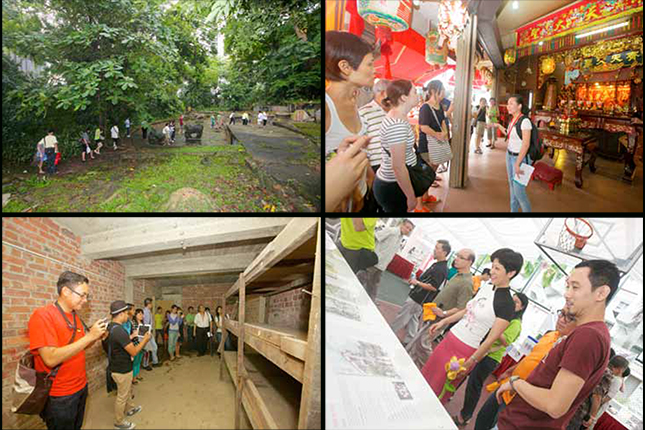
The trail is also the first to be adopted by a school. Henderson Secondary, which is located not too far away from the estate, adopted the Tiong Bahru Heritage Trail for two years and used it as an education platform. Students also served as the NHB's ambassadors in promoting the trail to other schools. The NHB also organized training sessions for students who were keen to act as guides for their peers. The heritage trail offered students a creative avenue to involve themselves with local history and further their understanding of Singapore's past, while honing their research and leadership skills.
LAUNCHING THE TIONG BAHRU TRAIL
On the morning of 14 April 2013, the basketball court beside the Tiong Bahru Community Centre was turned into a site of festivities for the young and old, as a curious crowd explored colourful stalls, watched cultural performances put up by residents and enjoyed the privilege of being the first people to embark on the heritage trail. Volunteer guides, students and long-time residents led the guests through the estate, stopping at 10 markers and storyboards that showcase historical elements of Tiong Bahru and pointing out places and moments of significance. The launch of the trail was a day-long event of fun and celebration as residents and visitors alike gathered to celebrate the history and life of a com- munity with much to offer in stories and sights.
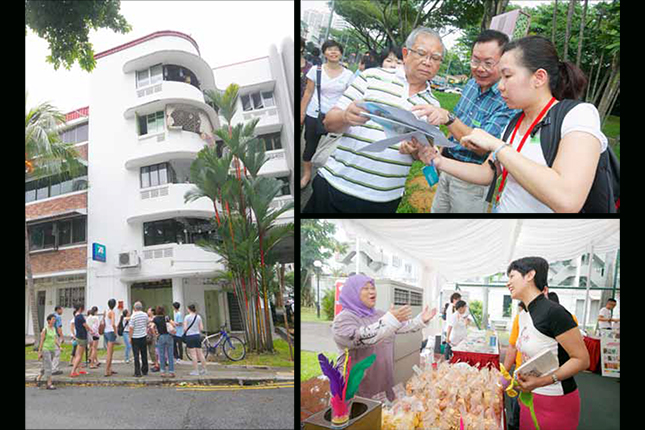
The Tiong Bahru Heritage Trail is a collaborative effort between the NHB, the Tiong Bahru Youth Executive Committee (TB YEC), and the Tiong Bahru Community Centre Management Committee. Launched in conjunction with a Tiong Bahru Heritage Fiesta organised by TB YEC, the event was graced by Guest-of-Honour Ms Indranee Rajah, in her capacity as Advisor to Tanjong Pagar GRC Grassroots Organisations. Approximately 1,000 people attended the event, including close to 200 invited guests and representatives of businesses and organisations located in the area, who were invited to walk on a modified trail route of the estate. As part of the tour, the guests had the opportunity to interact with Henderson Secondary students who were stationed at each heritage marker to introduce the guests to the site. These students had been trained by the NHB and conducted their own research to prepare for the launch. Their efforts certainly paid off as guests and students alike had an enriching time learning about the places they saw.
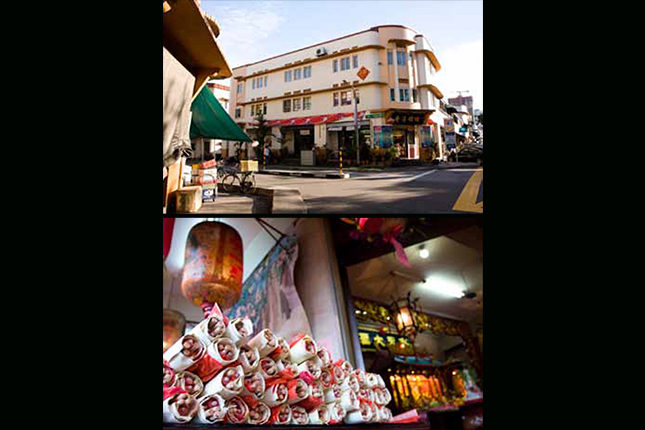
Many of the participants and guests also grabbed the chance to sign up for a guided walk of the trail. Two trail routes were available: one covered all ten heritage markers, while the other brought participants into the pre-war air-raid shelter at Blk 78 Moh Guan Terrace. With help from the HDB and Tanjong Pagar Town Council, the air-raid shelter was opened to the public for this special occasion. Adding a highly personal note to the tours were the volunteer guides, who shared their own research, experiences and stories with the participants.
Also at the launch to share her personal story was Ms Mary Pereira, who was born in the air-raid shelter at Moh Guan Terrace during an air raid in 1942. Ms Pereira’s mother was taking cover in the shelter during the war when she suddenly went into labour. Thankfully, the shelter was equipped with medical facilities and had a doctor on site to attend to her. Ms Pereira was thus safely delivered and has shared her story with many others over the years, including the guests on the trail.
Many visitors were clearly enriched by the tours. Expressing his thoughts after going for the guided walk, Anthony Loke said he “definitely learned more about the history and community activity in Tiong Bahru in addition to the architectural information.” Another participant, Karen Phan, remarked that the guided tours help to make “Tiong Bahru [a] living and growing museum.”
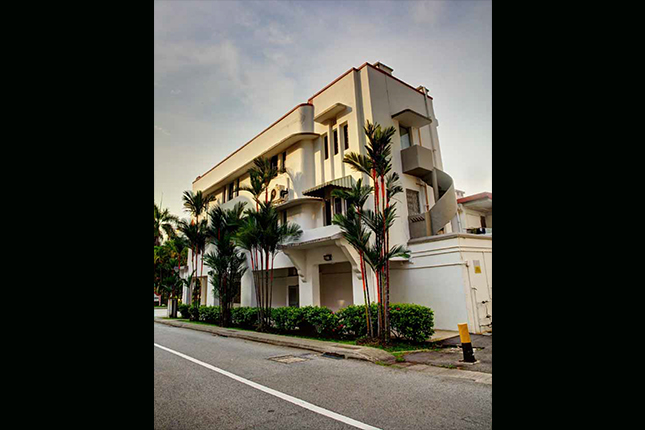
The day-long launch event culminated in an outdoor movie screening that relived the old times back in the 1950s when the Tiong Bahru Community Centre would organise open-air film screenings for the community. Earlier, various community groups had set up booths selling snacks, handicrafts and fashion by the community centre. Occupying a prominent space was a stall by Urban Sketchers Singapore, a group of avid and energetic artists who focus on drawing various outdoor locations in Singapore. The Urban Sketchers had collaborated with the NHB to conduct a sketch-walk along the trail, with individual artists seated at various spots where they could capture the mood and atmosphere of the estate in beautiful artworks that were exhibited during the trail’s launch. Paul Wang, a representative of the group, stated, “We the Urban Sketchers had a really good time sketching Tiong Bahru. The event was well-organised and we appreciate NHB’s hard work.”
Another touch of artistry at the event came from fashion designer Elyn Wong of Stolen, a Singapore-based womens-wear label. For the launch, Ms Wong had created a designer tote bag featuring Tiong Bahru’s distinctive Art Deco flats. The bags were sold during the Tiong Bahru Heritage Fiesta, with all proceeds going to the Tanjong Pager-Tiong Bahru Citizens’ Consultative Committee Community Development and Welfare Fund to assist needy residents. The money collected from subsequent monthly guided trails, which require a nominal fee of two dollars per participant, will also go into this fund.
ROUTES TO DISCOVERING THE HEARTLANDS
As with earlier NHB community trails, the Tiong Bahru Heritage Trail was launched with the aim of engaging Singaporeans to learn and share about the heritage of the heartlands, as well as to document the unique histories and social memories of places and communities in different parts of Singapore. These trails chart old trades, businesses, schools and institutions as well as the diverse communities that have shaped the character of each place. As part of this effort, the NHB also encourages the community to actively contribute to the making of these trails. The result is that these trails include many human interest stories shared by old residents or business-owners, which provide first-hand accounts of important landmarks as well as events and changes that have taken place over the decades.
Another mission of the trails is to encourage the public to explore Singapore’s heritage on their own, and at their own time and pace. Apart from the permanent markers and storyboards installed at major historical locations along the trails, the NHB has produced detailed brochures to accompany each heritage trail, which provide in-depth information about the neighbourhoods and sites of historical interest. Tiong Bahru is just one of many heritage trails launched by the NHB in recent years; other community trails cover places such as Kampong Glam, Balestier Road, Jalan Besar, Bukit Timah, Queenstown, Ang Mo Kio and Yishun/Sembawang. There are also heritage trails focusing on the downtown Civic District as well as sites of significance during the Second World War in Singapore. Together, these trails offer a fresh and exciting understanding of the Singapore Story.
The heritage trails serve not merely as channels to improve our knowledge about places in Singapore. They also provide a useful platform for heritage enthusiasts, researchers and schools to pursue further research into the history of particular places, peoples and trades. It is hoped that these trails will motivate the public to see Singapore’s history in a fresh light and discover more about the past in their own backyards, and in doing so, make history into a pursuit and passion that is continuous, alive and enriching.
You can read about the various heritage trails developed by the NHB here.




